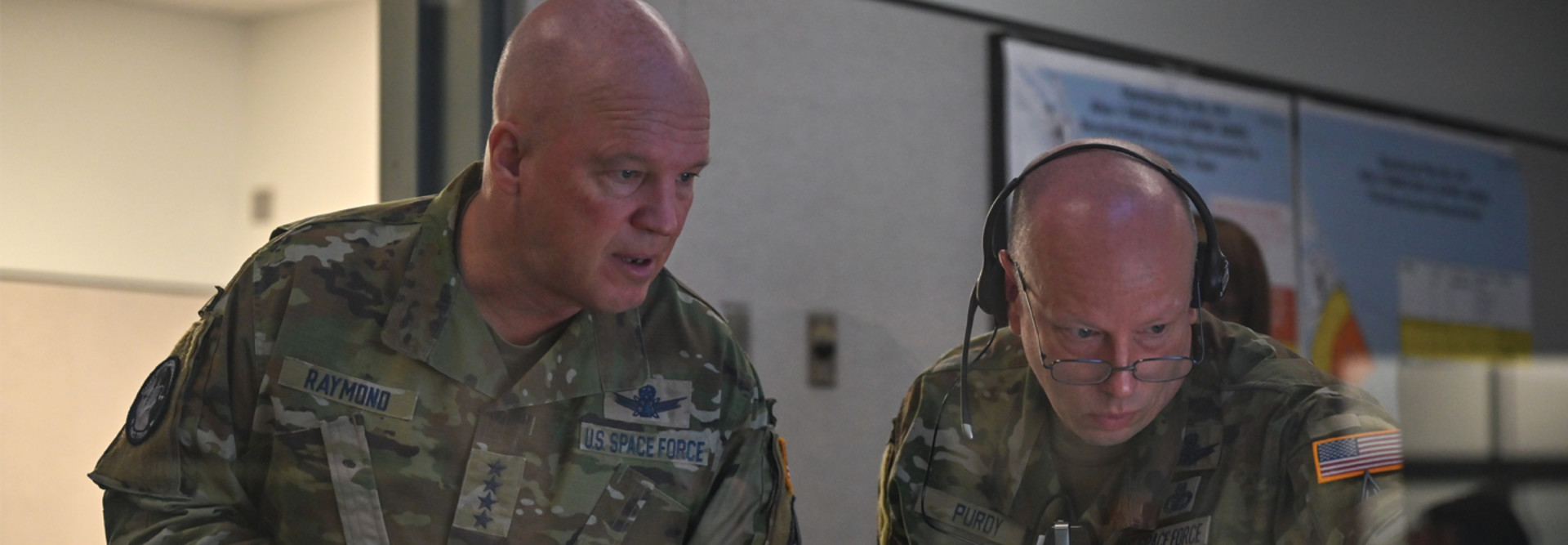The Space Force, the newly minted service branch and the first to be born in the age of the internet, is charged with securing the heavens above. It now has a digital strategy to match that lofty mission.
Earlier this month, the nation’s sixth military branch issued a document called “Vision for a Digital Service,” which outlines the force’s technology goals and the strategy. The Space Force aims to become the military’s first truly digital service branch, and take advantage of a lack of a legacy architecture and bureaucracy to be more agile than other branches.
Chief of Space Operations Gen. John Raymond says in the introduction to the document that the nature of the threats in space, which cover a wide spectrum and are rapidly evolving, mean that the fore needs to be an “innovative, interconnected and digitally dominant force.”
“We must act far more swiftly and decisively across all aspects of leadership, acquisition, engineering, intelligence, and operations in order to take up permanent residence inside the adversary’s observe, orient, decide, act (OODA) loop,” Raymond writes. “In addition, given the relatively small size of the USSF, accomplishing this goal will require us to amass a technologically adept, ‘digitally fluent’ space cadre more proficient, efficient, and agile than any other force in history.”
MORE FROM FEDTECH: Learn how to use analytics to discover workers with hidden IT talents.
Space Force Wants to Be Interconnected, Innovative, Digitally Native
To be interconnected, the force envisions treating its digital infrastructure as a critical asset and having high-bandwidth networks that support the rapid sharing of data. The document notes that Space Force wants its shared data repositories “visible and accessible to those who need it and secured against those who don’t.”
The Space Force also wants its guardians, as force members are known, to be able to operate in a way that is tied to a physical location.
“This can give the USSF the flexibility to have Guardians operate virtually as ‘digital nomads,’ seamlessly supporting a variety of missions from a range of locations as part of an intrinsically mobile force,” the vision document states. “We must pursue site-agnostic solutions, enabling service-based, distributed functionality regardless of the mission supported or the protection requirements of the data involved. All of these elements must also be fully linked and interoperable.”
In terms of innovation, to adaptively respond to threats, the Space Force says it will position itself as an “aggressive early adopter of cutting-edge, user-driven technologies, which represent the best capabilities industry has to offer.” Guardians will also be empowered to act on their ideas, the document states.
RELATED: How will 5G help the military modernize?
“USSF members must be granted the psychological safety and professional incentives to be assertive and take risks when appropriate,” the document notes. “To support this paradigm shift, we will modify our performance evaluation frameworks to recognize and value these traits.”
Every Space Force member “must be a change agent, able to contribute bold and imaginative solutions to hard problems,” the document notes, emphasizing the importance of “continuous learning and personal growth.”
“It will be incumbent upon all personnel to constantly expand their digital fluency and hone their skillsets to keep pace in this highly dynamic digital environment,” the document notes.
Being digitally dominant will require an empowered and digitally fluent workforce, the Space Force document notes. “Having a digital-first mindset and being digitally dominant will require an extensive network of innovative, digitally fluent Space Force professionals who instinctively prioritize actionable knowledge over static products,” it notes. Instead, guardians will be expected to be data-centric.
“This approach will allow us to rapidly capture and exchange needed information and knowledge within the data space, to include generating streamlined, dynamic, synchronized outputs tied to mission-related actions and outcomes,” the document notes. “Ultimately, our Digital Space Force will make data-driven decisions to field and operate groundbreaking, space capabilities at velocities that seem inconceivable today.”
A Digital Workforce in the Space Force
The Space Force also wants to have a different approach to its workforce that incentivizes them to collaborate, empowers them to act and builds upon their strengths, the document notes. The Space Force will “tap into and build upon each person’s unique strengths to power interconnected high-performing teams. We will capitalize on the inherently selective nature of our small Service to attract and recruit technically proficient talent from all corners of the nation, and we will manage this talent within a fully integrated Digital Workforce.”
The document also calls for the creation of a “Digital Headquarters,” and means that in terms of a function as opposed to an alternative to a physical office.
“To make effective decisions, we will regard data as a strategic asset, harnessing it for digitally enabled management of uncertainty and to power agile, data-driven decision-making,” the document states.
Instead of focusing on traditional, document-based communications, the Space Force will emphasize “unvarnished collaboration to and among decision-makers directly in the data space.” The force envisions using “immersive visualizations and customizable dashboards that are current and accessible anytime and anywhere” to help guardians sift through a deluge of data.
“This is where we’re really zeroing in on how we can we leverage data and analysis tools to streamline the processes by which we make decisions, use automation to ensure that our processes can move faster, and eliminate manual steps in our processes,” Maj. Gen. Kim Crider, the Space Force’s chief technology innovation officer, tells Federal News Network.
“How can we use collaboration tools to bring people together across multiple levels the organization in one single setting? By bringing people together, this is how we’re breaking the bureaucracy,” Crider adds. “We’re not waiting for a problem to happen — we’re being more proactive and we’re coordinating much more effectively and much more efficiently.”
U.S. Space Force photo by Airman 1st Class Thomas Sjoberg











